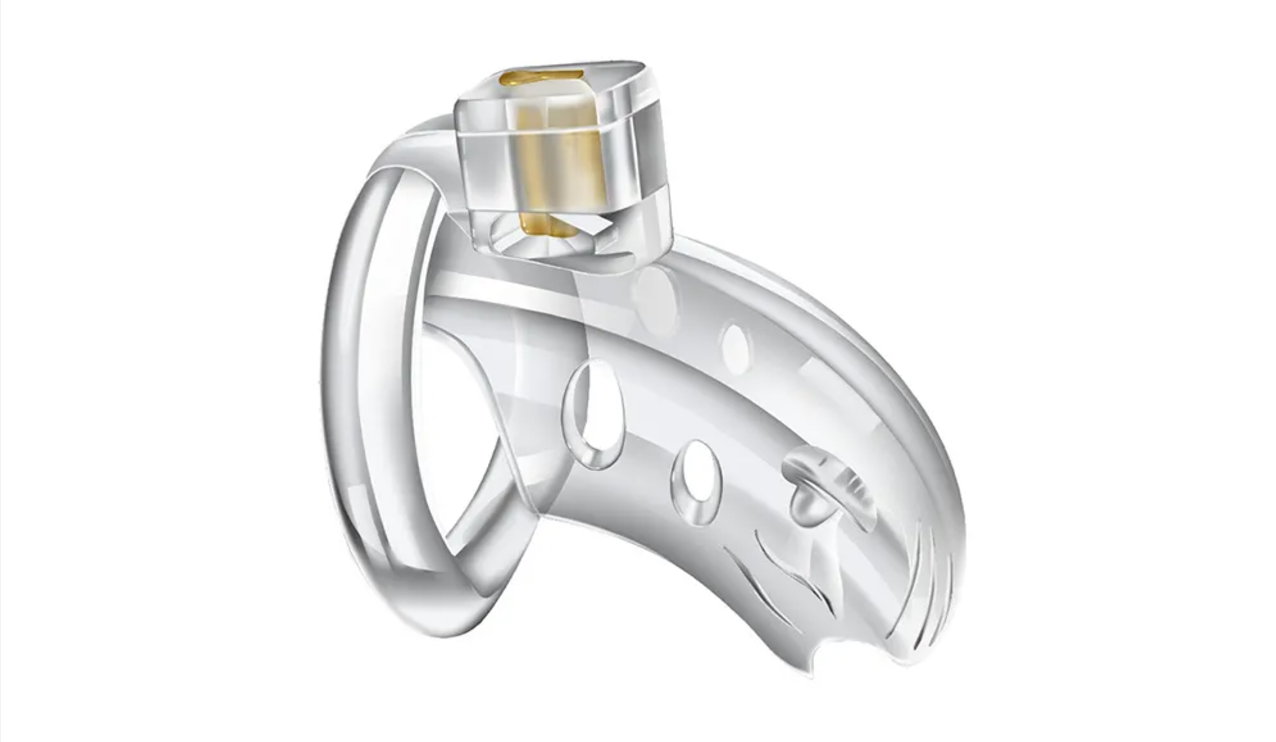The Long Term Effects of Wearing a Chastity Cage: What You Need to Know
2025-04-17
Wearing a chastity cage is often associated with kink and BDSM lifestyles. Still, the practice is gaining more mainstream attention as individuals explore incorporating it into their intimate relationships. While chastity cages can be used for control and denial, they also raise important questions about health, comfort, and the potential long-term effects on the body and mind. This article will delve into the physiological and psychological impacts of long term chastity cage use, providing a balanced and informed perspective to help you make a wise decision.
What Is a Chastity Cage and How Does It Work?
A chastity cage is a device designed to prevent the wearer from achieving an erection. It typically consists of a ring that fits around the base of the penis and a cage that encases the shaft, with a lock to ensure the device stays in place. The concept of male chastity has existed for centuries, but modern designs are more comfortable and practical, offering both psychological and physical control over the wearer.
The device can be worn for short or extended periods, depending on the level of control desired by the user or the dominant partner. Some wearers opt for days or even weeks of continuous wear, while others use the chastity cage for short-term sessions to enhance the dynamics of their relationship.
Physiological Impacts of Long-Term Chastity Cage Use
Can Wearing a Chastity Cage Cause Physical Harm?
The risk of physical harm depends heavily on the duration of wear, the device's fit, and individual health factors. While short-term use (hours to a couple of days) with a well-fitted device is generally considered low-risk for healthy individuals, long-term use (weeks to months or longer) carries a different and less understood set of potential risks due to the lack of comprehensive scientific studies.
Blood Flow and Erections
One common concern is whether it restricts blood flow and could lead to permanent damage. When worn correctly for short periods, a chastity cage should not pose a significant risk to circulation. However, the long-term effects on penile tissue health and vascular function are not well-documented in medical literature. Some medical professionals, such as urologists, caution that chronic pressure and micro-trauma from the device, especially during nocturnal erections, could theoretically lead to issues like fibrosis (scar tissue formation) over time.
Erections are a natural bodily response. In a chastity device, attempted erections can cause discomfort and pressure. While a few hours of this will not typically cause lasting damage, an uncontrollably prolonged erection (priapism) is a medical emergency. For long-term wearers, the constant cycle of restricted erections is an area of concern, though more anecdotal than clinically proven.
Comfort and Fit
Discomfort is the body's primary warning signal. A device that is too tight can cause nerve compression, leading to numbness or tingling. A device that is too loose can cause chafing and skin irritation. For long-term wear, these issues can escalate.
- Skin and Tissue Health: Continuous wear increases the risk of chafing, sores, and bacterial or fungal infections if hygiene is not meticulously maintained. There are anecdotal reports of long-term wearers developing conditions like Peyronie's disease (a bending of the penis due to scar tissue), potentially linked to repeated micro-traumas from the device.
- Urinary Health: Incomplete drying after urination can lead to irritation and increase the risk of urinary tract infections (UTIs) over time.
Psychological Effects of Wearing a Chastity Cage
Mental Stimulation, Desire, and Potential RisksThe psychological dimension is often the primary appeal of chastity play. Denial can heighten desire and focus on emotional intimacy. However, these dynamics are built entirely upon a foundation of explicit, ongoing, and enthusiastic consent from all parties.
Regular, out-of-dynamic check-ins are crucial. What starts as exciting frustration can, over the long term, evolve into significant anxiety, depression, or feelings of resentment if boundaries are not respected. The submissive partner must feel empowered to request the device's removal at any time without fear of repercussion. It is vital to distinguish between consensual power exchange and coercive control, which is psychologically harmful.
Addiction to Control and Submission
In BDSM dynamics, chastity can deepen the power exchange. For some, this can lead to a psychological reliance on the dynamic for arousal or emotional connection. This is not inherently negative but requires self-awareness from both partners to ensure the practice enhances the relationship rather than becoming a substitute for other forms of intimacy or a source of psychological dependency. The dominant partner also bears the responsibility of ensuring their partner's well-being is prioritized over the dynamic itself.

Long-Term Wear: Considerations and Safety Measures
How Long Is Too Long? A Practical Safety Guide
There is no one-size-fits-all answer, but extreme caution is advised for continuous long-term wear. A safer approach is "long-term intermittent use," where the device is regularly removed for extended periods of time.
- Hygiene Protocol: The device must be removed, and the skin thoroughly cleaned with mild soap and water at least once every 24 to 48 hours. This is non-negotiable for preventing infection.
- Fit Assessment: When you remove the device, check for any persistent marks, swelling, redness, or changes in skin color. The base ring should allow you to slide a finger underneath comfortably. Any numbness, coldness, or bluish discoloration of the skin indicates that the device is too tight and must be adjusted or removed immediately.
- Listen to Your Body: Start with hours, then a day, and gradually increase only if no adverse effects occur. Never ignore pain.
Health Monitoring: Warning Signs You Must Not Ignore
Vigilant self-monitoring is your first line of defense. Remove the device immediately and consult a healthcare professional if you experience any of the following:
- Numbness, tingling, or a "pins and needles" sensation that does not resolve quickly after removal.
- Persistent pain of any kind.
- Coldness or a bluish/purplish discoloration of the skin indicates restricted blood flow.
- Signs of infection include swelling, pus, a foul odor, or fever.
- Difficulty urinating or pain when urinating.
- Any cuts, breaks in the skin, or open sores.
Conclusion: Making a Truly Informed Decision
Wearing a chastity cage can be a consensual and thrilling part of a relationship, but it is not without its potential risks, particularly with long-term use. The current understanding of these risks is based more on anecdotal evidence than rigorous science, so a precautionary approach is essential.
An informed decision acknowledges both the potential for enhanced intimacy and the very real physiological and psychological pitfalls. Prioritize safety over fantasy, communication over assumption, and always err on the side of caution. Your sexual health and mental well-being are paramount. If you have any underlying health conditions or concerns, consulting a healthcare provider before engaging in long-term chastity play is a highly recommended step.









